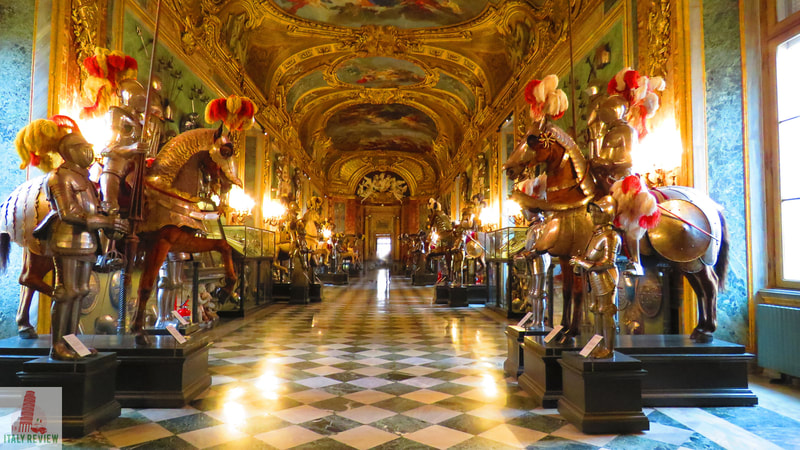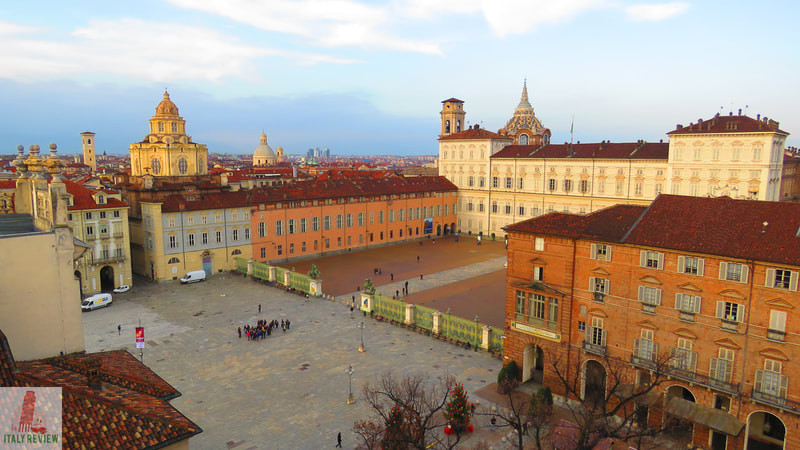Royal Palace of Turin
|
By Dion Protani
|
Latest update: 17 January 2024
|
|
The Royal Palace of Turin or Palazzo Reale di Torino is one of thirteen sites in and around Turin that make up the 1997 UNESCO World Heritage Listing of Residences of the Royal House of Savoy.
The sixteenth century Palace combines elements of both the Neoclassical and Baroque architectural styles. It's situated on Piazzetta Reale in the city centre next to Piazza Castello. |
Related links
Profile
The Royal Palace of Turin, known as Palazzo Reale di Torino in Italian, is a magnificent historical residence located in the heart of Turin, Italy. It served as the primary residence of the House of Savoy, the ruling family of the Kingdom of Sardinia and later the Kingdom of Italy, making it one of the most significant royal residences in Europe.
The Royal Palace is an architectural masterpiece, representing various artistic styles from different historical periods. The building's façade features grandeur and elegance, with stunning neoclassical elements, while the interior boasts opulent halls, richly decorated rooms, and valuable art collections.
The palace houses numerous chambers and halls, each designed and adorned by prominent architects and artists of their time. Some of the most noteworthy spaces within the Royal Palace include the Sala del Trono (Throne Room), the Salone d'Onore (Hall of Honor), and the Galleria Beaumont, among others.
The palace's gardens, known as the Royal Gardens, are equally impressive and well-manicured, providing a peaceful oasis within the bustling city.
The Royal Palace is an architectural masterpiece, representing various artistic styles from different historical periods. The building's façade features grandeur and elegance, with stunning neoclassical elements, while the interior boasts opulent halls, richly decorated rooms, and valuable art collections.
The palace houses numerous chambers and halls, each designed and adorned by prominent architects and artists of their time. Some of the most noteworthy spaces within the Royal Palace include the Sala del Trono (Throne Room), the Salone d'Onore (Hall of Honor), and the Galleria Beaumont, among others.
The palace's gardens, known as the Royal Gardens, are equally impressive and well-manicured, providing a peaceful oasis within the bustling city.
History
The Royal Palace's history dates back to the 16th century when it was originally built as a fortress by the Duke of Savoy, Emmanuel Philibert. Over the centuries, the palace underwent several expansions and renovations under various rulers of the House of Savoy.
In the 17th and 18th centuries, the Royal Palace became the official residence of the Duke of Savoy and later the Kings of Sardinia. Turin became the capital of the Kingdom of Sardinia in the early 18th century, and the Royal Palace played a crucial role in the political and cultural life of the kingdom.
During the unification of Italy in the 19th century, Turin became the first capital of the newly formed Kingdom of Italy, and the Royal Palace remained a significant royal residence until the capital was moved to Florence and later Rome.
In the 17th and 18th centuries, the Royal Palace became the official residence of the Duke of Savoy and later the Kings of Sardinia. Turin became the capital of the Kingdom of Sardinia in the early 18th century, and the Royal Palace played a crucial role in the political and cultural life of the kingdom.
During the unification of Italy in the 19th century, Turin became the first capital of the newly formed Kingdom of Italy, and the Royal Palace remained a significant royal residence until the capital was moved to Florence and later Rome.
Key features
- Opening Hours: The Royal Palace is generally open to the public from Tuesday to Sunday. The specific opening hours may vary depending on the season, so it's advisable to check the official website before planning your visit.
- Entrance Fee: There is an entrance fee to access the Royal Palace, with discounts available for students, children, and seniors.
- Guided Tours: Guided tours are often available for visitors who wish to gain deeper insights into the palace's history, architecture, and art collections.
- Photography: Photography is generally allowed inside the Royal Palace, but flash photography may be restricted in some areas to preserve the artworks.
- Accessibility: The Royal Palace is generally accessible to visitors with reduced mobility. Elevators and ramps are provided to ensure inclusivity.
|
Opening-times:
Tuesday- Sunday: 09:00 - 20:00, except Saturdays (09:00 - 23:00) Last entrance: One hour before closing time Closed: Mondays |
Prices:
Full: €15 Youths aged 18-25: €13 Children under 18: Free entrance |
Palazzo Reale di Torino
|
City: Turin
Province: Metropolitan City of Turin Region: Piedmont Groundbreaking: 1645 Architectural styles: Baroque, Neoclassical Nearest Metro: Porta Nuova (1.3 km/16 minutes' walk) Close by: Piazza Castello, Palazzo Madama, Turin Cathedral Recommended accommodation: Turin Palace Hotel |
UNESCO World Heritage Site
Residences of the Royal House of Savoy
Year: 1997
Residences of the Royal House of Savoy
Year: 1997























